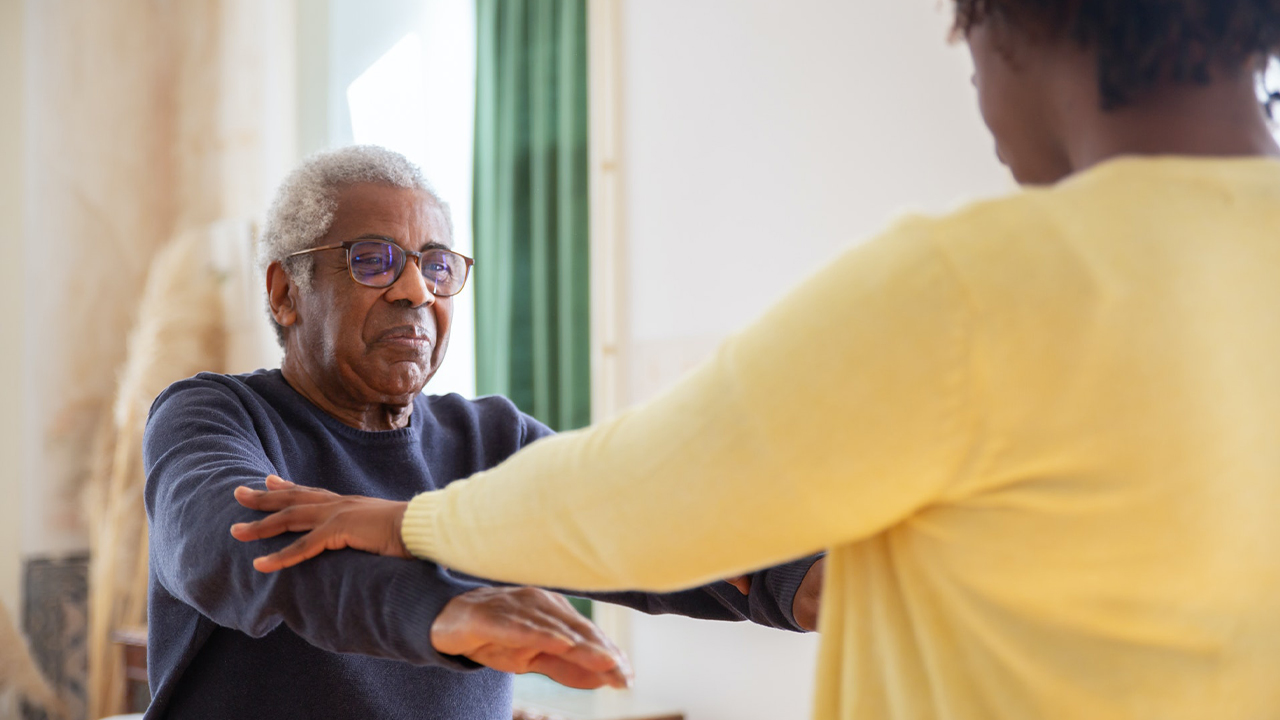
Falls have become epidemic in the world, and in America falls are now the leading cause of death due to injury for those over 65 years of age.
The CDC (Centers for Disease Control & Prevention) states:
- 1 in 4 Americans ages 65 and older incur a fall each year.
- Falls account for more than 40 percent of all nursing home admissions. Falls are also the leading cause of injury-related emergency room visits for older adults, the major cause of hip fractures, and responsible for more than half of fatal head injuries.
- Falls result in more than 3 million injuries treated in emergency rooms each year, including over 800,000 hospitalizations.
For the aging adult who takes a fall, with or without injury, they become more nervous about experiencing it again. Quality of life changes. This fear causes the person to limit activities they normally enjoyed doing: social interactions diminish; gait and speed of walking changes. These changes can lead to further decline in physical fitness, depression, and loss of independence. Even the smallest changes can lead to another fall.
The NCOA(National Council On Aging) gives many steps to prevent a fall:
1). Start a good balance and exercise program – Inactivity is one of the main reasons that falls occur. Balance, coordination, flexibility, and muscle strength are lost if not challenged. Try my balance training workouts, as well as the posture, balance, and stretch workouts.
—-
Benefits of balance training:
a). Better Mobility – All aging adults want to stay mobile for as long as possible. When a fall or fear of falling disrupts this ability, being mobile becomes not only harder to do but not challenged. Balance is the ability to move without falling and distribute your weight in order to hold a stable stationary position. It is like anything else in life, the more you practice, the better it will function.
b). More Muscle Tone – Exercise and balance routines help you improve muscle tone, which means better balance and more cushion for your bones in case of a fall. Stronger muscles will also help stabilize you while standing and sitting. Stronger and larger muscles can buffer the impact of a fall, providing some protection to bones and joints. Having a strong core helps us with sitting, getting up, and in and out of bed. Having strong lower body muscles also contributes to these movements as well as our movement through space. Together, they make up our base which is our balance.
c). Improved Reaction Time – Exercise and balance routines can give you better reaction time to catch yourself before you fall, if you become unstable. That faster reaction time can help you keep you upright if you start to fall by putting out an arm quickly to grab something stable, or to get your footing right and transfer weight from the lower body and core to find your stability again.
d). Bone Strength – All exercise, especially resistance training, helps to build stronger bones, which means fewer breaks. Stronger, denser bones form when they are under “stress” of resistance and weight-bearing activities.
e). Brain Function – Cognitive ability can improve with regular exercise. It can keep the mind sharp, so you can better process your environment, proprioception(where you are in your environment), and the ability to avoid risky situations. Clearer thinking may help you avoid situations that increase fall risks.
f). Improved Coordination – Good coordination can enhance your ability in life. It can help prevent all kinds of injuries and help you stay more effective as you age. This can directly help prevent falls but can also help if you do start to fall. Adding balance training to your exercise routine will not only improve your overall health, but will help you stay confident in your abilities.
—-
2). Vision checks annually – Vision impairments and changes such as vision loss or blurriness can upset someone’s balance. While vision may not appear to be the most important factor in keeping balance, the body needs it to maintain normality. It takes the vestibular, vision, and proprioceptive systems working together to keep things level; but it is the vision which provides most of the necessary information.
The vestibular and proprioceptive systems work off the information the eyes and brain give them, helping with stability and position whether standing still or in motion. A simple annual eye exam is the best preventative. Many other tests will be done at that time and any vision issues will be treated moving forward.
3). Review your medications – Medications can increase your fall risk in many ways, from blurring your vision to causing lightheadedness, and drowsiness to delirium. Some medications even affect the inner ear, spurring temporary or permanent balance disorders. Some can also cause decreased blood pressure to the brain and can cause a feeling of dizziness. Ask your physician or pharmacist to look over the medications you are taking, their interactions with one another, and how they affect your balance.
4). Home hazards – Remove any fall or trip hazards in your environment, such as throw rugs or high-pile carpeting. Add lighting in low light areas such as hallways and bathrooms. Make sure grab bars are available in key areas.
As always, talk with your doctor and family about fall concerns. You are not in this alone. Taking a few simple steps will help you remain independent, and stay All Over Strong!
Stay happy and healthy and confident always!
Meredith
